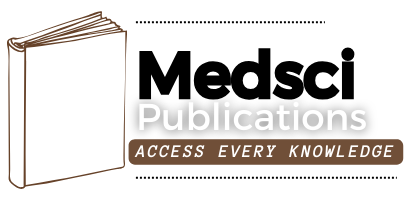National Journal of Medical Research (ISSN: 2277-8810) is a quarterly published peer-reviewed open access (CC-BY-SA) medical journal. It is dedicated to publishing high-quality research that advances our understanding of in field of medical sciences. Our mission is to provide a platform for researchers, clinicians, and healthcare professionals to share their knowledge and insights with a global audience. Learn more about the journal's Aims & Scope. NJMR is indexed by DOAJ.
Peer Review Policy
The NJMR follows a peer review process to assess the quality of the research and validate the findings of the research, identify any potential flaws or errors in methods or reporting, and provide constructive feedback to authors to improve the manuscript. It’s a critical step in ensuring the quality and integrity of scientific research. It helps to ensure that published research is accurate, reliable, and of high quality, and helps to maintain the credibility and reputation of the scientific community.
Manuscript which undergoes peer-review are Original Articles, Short Articles/ Communications, Review Articles, Perspectives, Technical Reports and CMEs. Peer review of other article is at the discretion of the editors.
Whole peer-review process is through the online editorial management system of the journal. The submission is also through online system only.
All submitted manuscripts are assessed by the editorial staff. Those manuscript which are out of the scope of the journal, does not fulfil the journal article format, or violating editorial policies are declined outright without eternal review. Manuscripts found interesting for our reader are sent for formal peer review.
Initially title and abstract send to the potential reviewers and those who agrees, a full text blinded manuscript send for the review. Reviewers are asked give comments and suggest rectifications, if required. Generally, manuscript is reviewed by two to three reviewers. Decision regarding the article is taken by the editors based on the reviewers’ recommendations, the strength of the arguments presented by reviewer, response of the author, and or other information available in other literature.
In case the editor think that the corrections required in the manuscript before acceptance, the manuscript is sent back to author with comments of reviewer and editor. Author is asked to submit revised manuscript within certain time.
The revised manuscript is again assessed by the editorial staffs and send to the reviewer again to review the manuscript considering the previous comments. In certain instances, editors will not send a revised paper back to the reviewers if it appears the authors have not made a significant effort to address the issues raised.
The editors then select one of the following options, based on the feedback of the reviewers:
- Accept with or without editorial changes.
- Send the manuscript back to the authors for revision to resolve the reviewer/reviewers' concerns before a final decision is made.
- Decline with specific reasons indicating to the authors that additional work may be required to justify a resubmission.
- Decline outright, typically based on lack of specialised interest, lack of novelty, insufficient conceptual progress, or significant technical and/or interpretive issues.
Peer-Reviewer
Many factors are taken into consideration while selecting a reviewer which may include specialisation in the subject, scholarly publication record, previous review experience, our own experience with the reviewer, recommendations from others including the author, and academic & research background. Reviewers who are quick to respond, who give comments with reasoning, and who are from the same region where the study was conducted may get preference.
Authors are encouraged to suggest neutral judges who would be suitable for the role. Most of the time, the journal gives them preference, but the editor's decision regarding reviewers is final. When making proposals for peer reviewers, authors are highly encouraged to consider geographic location, research experience, publication experience, etc.
Double blind peer review
The NJMR employs a double-blind peer review process. The authors' and reviewers' identities are kept strictly confidential. To keep their manuscript anonymous, authors must follow the submission checklist.





